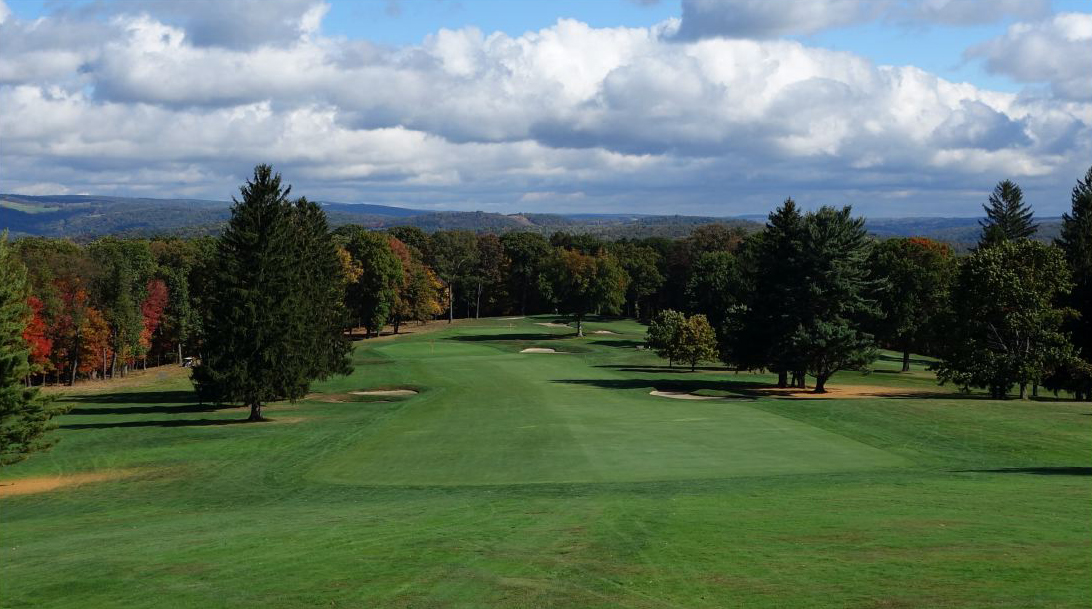The list below isn't strictly a list of my favorite courses. In fact, there are many on my favorites list that do not appear below. However, I have compiled a list of courses, that I have played, that I would strongly suggest for my buddies to visit and play, whether it be for the historical significance, architectural significance, or what I'll call their "fun factors." The list is in alphabetical order below. I have also posted one picture of each course below the text, to keep the flow moving.
Atlantic CityNorthfield, New JerseyThis course one I refer to a lot when looking for examples of great golf courses that are just plain fun. While it only stretches to 6,577 yards, it still presents plenty of challenges, specifically on the greens. However, the truly great things about this design, in my opinion, are the options it provides golfers. You do not have to hit every fairway to have a decent shot at the green and you don’t have to hit every green to have a reasonable chance at par. It’s a fairly wide golf course that sits on the Lakes Bay, right across from Atlantic City, so wind is a constant factor here, which makes playing it all that much more enjoyable.
AusableSt. Huberts, New YorkOne of the oldest courses in the country from what I understand; opened in 1888. It's a fun golf courses that presents plenty of options to the golfer. The setting of the course is unrivaled, as the club sits in a valley in the High Peaks region of the Adirondacks, in the shadow of Giant Mountain, Mount Marcy and Algonquin Peak.
BerkshireReading, Pennsylvania A Willie Park Jr. gem! The course is very fun and has undergone (undergoing?) recent restoration work by Forse / Nagle. The greens are truly special and offer plenty of movement, as do the fairways; golfers will benefit by using local knowledge. The course also features "dueling par-3s" of sorts, and the two look and play very differently.
EngineersRoslyn Harbor, New YorkThis original 1917 Herbert Strong design has been touched by a handful of different architects, including Devereaux Emmet and most recently Gil Hanse. The greens here are some of the strongest, most fun, and yet, most challenging that I have played on. The first green is all-world and the subsequents are wonderful and present their own unique traits and challenges; there is not a weak green on the course. There is a mix of long and short holes that all use the terrain beautifully. There is an extra par-3, to take place of the 122-yard "two or twenty" hole on certain days.
Hay HarborFishers Island, New York"The Little Club" as the Fishers Island residents refer to this facility is another oldie but goodie. Built in I believe 1898 by George Strath, this course has the "simple, old-world" feel is a blast to play, especially when firm and fast, and its setting is quite amazing, right on the Block Island Sound off of Fishers Island, New York. The island of course is only accessible by ferry or aircraft, which adds to its mystique. While many golfers frequently discuss Hay Harbor’s second hole, my favorite hole is No. 5, an uphill 407-yard par-4 with strategically-placed bunkers, original old-school mounding, a Skyline green, false front and an impressive view of the water.
Hyde ParkCincinnati, OhioUntil recent years, this course didn’t get a ton of attention in the Cincinnati area. However, Hyde Park deserves its recent attention and more. I am not sure how much of Thomas Bendelow’s work is left (1909) as Donald Ross worked on the course a bit later. However, the existing course does a masterful job of using the land, as is wonderful, natural movement in the fairways and throughout the course that come into play strategically on more than a few occasions. The greens too are very special and depending on where the hole is located can present both very fun and very challenging approaches and putts. As I understand it, the club has been working through a restoration process / master plan of sorts for several years, if it hasn’t been completed already.
Lake Placid – LinksLake Placid, New YorkLake Placid Club's Links Course was laid out by Seymour Dunn, who was the longtime pro there, and was restored by Graham Cooke. I found the course to be very fun and it presented challenges for all types of players. It's definitely an "old-school" design and I loved every minute of it. The course sits in a valley in the village of Lake Placid and offers views of the High Peaks region and even the 1980 Winter Olympics’ ski jumps.
LederachHarleysville, Pennsylvania Kelly Blake Moran built this municipal golf course in the mid-2000s and it is fun, fun, fun! I found the green complexes to be the highlight of the course as they all present the golfers with many different shot options as many have large shaved areas around the putting surfaces. This allows golfers to pitch with a lofted club, chip with mid- or long irons, hybrids or fairway woods, or even putt from well off the green. In a metro area that has plenty of great courses, this is one that shouldn’t be overlooked, especially when considering its fun factor.
MaketewahCincinnati, Ohio Maketewah is another golf course gem in Cincinnati that was also originally laid out by Bendelow and worked on by Ross. I have not visited the facility since its recent bunker work, but it looks better than it even did before. This course also offers a good mix of long and short holes with tremendous greens. No. 17 is a very fun short par-4, while No. 13 is a very difficult, long par-4 that gives golfers the sensation they’re playing up the side of a mountain. No. 8 is my personal favorite, as it’s green is spectacular, with a tremendous back to front slope, and interesting movement throughout. Maketewah also has some unique features in regards to the order of it’s holes: back-to-back par-5s (Nos. 14 and 15) and par-3s for both No. 9 and No. 18, of which, both play very differently.
Manufacturers’Fort Washington, Pennsylvania The first thing many people refer to when discussing Manufacturers’ is its famous incline on its 18th hole, or perhaps its famed locker room showers. While the incline is certainly unique and fun to ride and the showers are magnificent, they do not outshine this course, located in the suburbs of Philadelphia. As a 1925 William Flynn layout, this course used its existing terrain remarkably. There are incredibly fun par-3s, par-4s and par-5s, all with variety in their own right. The course also uses two old quarries incredibly, on the short, 117-yard par-3 8th and the longish 430-yard par-4 16th. No. 18 has two greens: the original, as I understand it, sits atop the massive hill and a second, built later, is down below, where golfers board the incline. The use of the upper green makes No. 18 a par-5, as opposed to a par-4 when the lower green is in use. As a side note, Manufacturers’ is located right across the street from Lulu, a famed Ross design.
North HillsNorth Hills, Pennsylvania Not a ton of people may be all that familiar with Frank Meehan’s work, but North Hills gives plenty of reason to justify further study. Perhaps this club is sometimes overlooked for its proximity to more well-known Philadelphia courses (Manufacturers’, Lulu, Huntingdon Valley, Philadelphia Cricket, and Whitmarsh Valley are all within five driving miles), but it shouldn’t be, as I find it to be a very strong and fun golf course. From the fairways and tees, the greens appear to be understated, but make no mistake: They present incredible challenges, and I mean that in a very good way. The course sits on an interesting plot of land, almost an “H” shape, and I believe its routing hasn’t changed since it was built. Additionally, the property is in a very well-kept middle class neighborhood and could remind folks of what the stereotypical “American dream” looks like.
Philmont – NorthHuntingdon Valley, Pennsylvania Like North Hills, Philmont North is perhaps overlooked due to its proximity to a terrific and challenging William Flynn, Huntingdon Valley. However, just because Philmont's North Course ’s a mere few miles from HVGC, doesn’t mean they are at all similar. The North Course is a Willie Park Jr. design (not a Flynn as some have previously thought) and this is even more evident with the club’s recent restoration work, particularly on its greens. Like Berkshire, the greens are the true highlight on the North Course, but it also offers plenty of other interesting bits, including its near-horseshoe shaped ninth hole and its cluster of four par-3s that are laid out very near to each other, but yet present unique challenges. s
Pittsburgh FieldPittsburgh, Pennsylvania Similar to Manufacturers’ and its incline near Philadelphia, Pittsburgh’s Field Club is well-known for its elevator that golfers may take from the 17th green to the 18th tee. To differ from the rise from 17 to 18, the drop from No. 1’s tee to fairway is incredible, yet not so steep that golfers may not walk down safely or efficiently. This course has tremendous movement in its fairways, as evidenced most clearly on No. 9, perhaps my favorite hole on the course. Additionally, Field Club offers great short par-4s, like No. 2, as well as long par-4s, like Nos. 8 and 12. Side note: The elevator is perfectly safe, but I must admit, I became a little stressed on the ride up!
Pocono ManorPocono Manor, Pennsylvania I believe the first several holes at Pocono Manor were laid out by H.H. Barker and Samuel Allen in 1911, and the rest were added by none other than William Flynn at a later date. Pocono Manor, which sits on top of a mountain in Northeast Pennsylvania, has no fairway irrigation, and trust me when I say, that’s a great thing! To play this course when it’s firm and fast is an absolute joy. While many will surely speak about its incredibly short par-3 seventh hole (77 yards on the card, playing to an effective yardage of 45 yards as I recall, due to the severe drop from tee to green), I fell in love with Nos. 9-15. These holes again use the terrain perfectly, and surprisingly, do not use one sand bunker through this stretch (in fact, most of the holes on the course do not have sand bunkers). Instead, Flynn used piles of rock and stone from the construction and used them strategically in the designs of the holes. It may not sound like much, but they get the golfers’ attention and require skill and creativity to escape if found.
Rolling GreenSpringfield, Pennsylvania Rolling Green attracted some national attention recently by hosting the 2016 U.S. Women’s Amateur, a tournament which featured an electric final match. Rolling Green, while certainly challenging, is in my opinion, an absolute blast to play. Additionally, there is a hole that alternates par, depending on which tee the golfer is playing. From the back tees, the "Black" tees in their case, No. 18 plays as a par-4 at 493 yards, making the course a par-70. From the next set of tees, the "Blue" tees, No. 18 plays as a 527-yard par-5 with a course par of 71. I have not played Rolling Green from the Black tees as I try not to torture myself with long irons and fairway wood approaches on most holes, but I can say that playing No. 18 from the Blue tees is very fun.
Scranton – OldClarks Summit, Pennsylvania The greens, the greens, the green! Scranton’s greens are incredibly good and some of the very best I have ever played on personally. The original Walter Travis greens (I believe 15 remain original) are something to see! They are very bold, but fair and fun. The movement is wonderful, both in the interior of the greens as well as around their edges. Scranton has been going through an Oakmont-like restoration for a number of years now including expanding greens to their original sizes and opening up the course from the clutter of trees, and while I never had the opportunity to see the course pre-restoration, I understand it’s a night and day difference, to the positive. While I cannot speak to this myself as I have not played some of the “biggies” in the Philadelphia area, some folks on this site have said that Scranton is a top-three course in the Golf Association of Philadelphia and have even suggested that they have the second-best set of greens in the entire state of Pennsylvania.
Somerset HillsBernardsville, New JerseySomerset Hills was the first Golden Age design I had the opportunity to play and it blew my mind. I was fortunate to play on a Monday with a group of caddies in 2008, prior to a lot of the recent Hanse restoration work. The caddies were great fellas and taught me a lot about the course. The greens were unlike anything I had ever seen, as was the approaches; the club seems to keep the turf healthy, firm and fast to allow different shot types on shots into the green. Furthermore, I find the essence of the front nine and back nine to be not only unique but impressive. The front nine was built on an old race track, of which was incorporated into the design that you can still identify today, where as the back nine takes golfers through a wonderful journey through more wooded terrain, but it never has a claustrophobic feel.
St. George’sEast Setauket, New YorkAs a good friend of mine recently said, “If you get the opportunity to play St. George’s, don’t walk…run!” I echo his suggestion. Long Island’s St. George’s is so much fun to play and offers terrific greens and beautiful bunkers throughout. While the course’s back tees only stretch to 6,232 yards, it doesn’t play that short and certainly has a “big league” feel to it, as I am sure was Devereux Emmet’s intention.
Stonewall – NorthElverson, Pennsylvania When folks think about Stonewall, more often than not they think about its Old Course. However, the North Course, or “the Udder Course,” as some affectionately refer to it (a play on words based off of its dairy cow logo), is one of my absolute favorite courses to play because it's so darn fun! There are more well-known courses in the Philly area, and one could argue that there are better designs, but regardless, this is one of my favorites. It's so much fun. While each hole definitely presents their own challenges, each has seemingly has a "risk-reward" aspect to its design. And the greens are very special too! So much fun. The North Corse is truly one of those courses I could play every day and never get bored.
SunnehannaJohnstown, Pennsylvania Home to the famous Sunnehanna Amateur, this course is another historic, yet incredibly fun golf course. There are many things A.W. Tillinghast did right here: Skyline greens, a Reverse Redan, a Double Dogleg, use of the land and bunkering. The design certainly lends itself to a firm setup; a few holes play easiest when bouncing / rolling the ball onto the green (Nos. 3, 4, and especially 7 come to mind, among others). I really enjoyed the par 3s. My favorite hole may have been No. 7, where the play was to hit a couple of clubs less than the actual yardage by hitting just over a soon-to-be-resored bunker that's situated maybe 25-30 yards short of the green surface and let the ball bound onto towards the hole. What's even better is that while the course could easily "bite" you if you're not careful or don't think through the hole designs, it's very playable. That is something that other courses and clubs should emulate; it will only help their membership enrollment.
#####
PHOTOS
#####
Atlantic City Ausable
Ausable Berkshire
Berkshire (Photo: The Bausch Collection at MyPhillyGolf.com)
 Engineers
Engineers (Photo: The Bausch Collection at MyPhillyGolf.com)
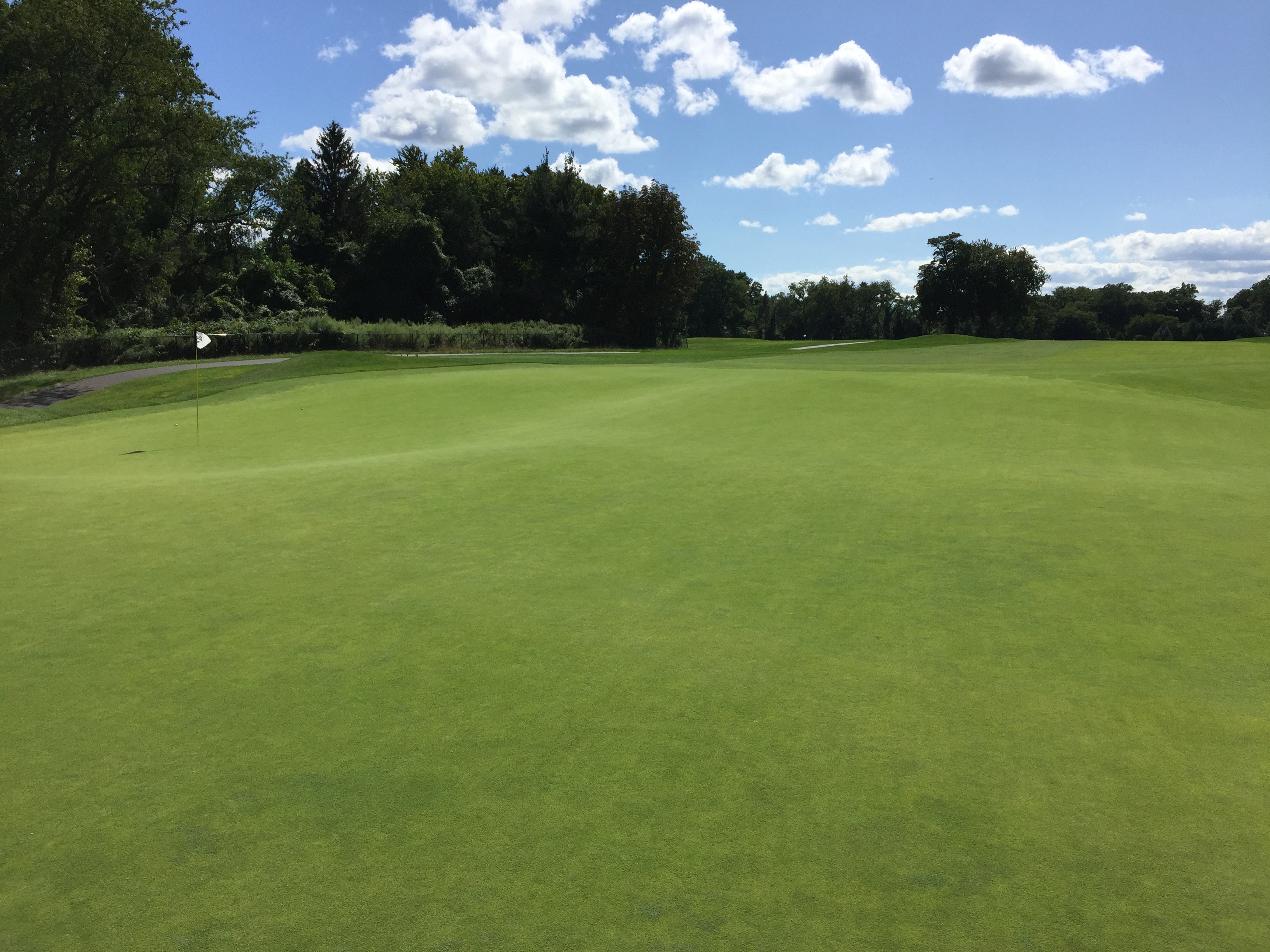 Hay Harbor
Hay Harbor Hyde Park
Hyde Park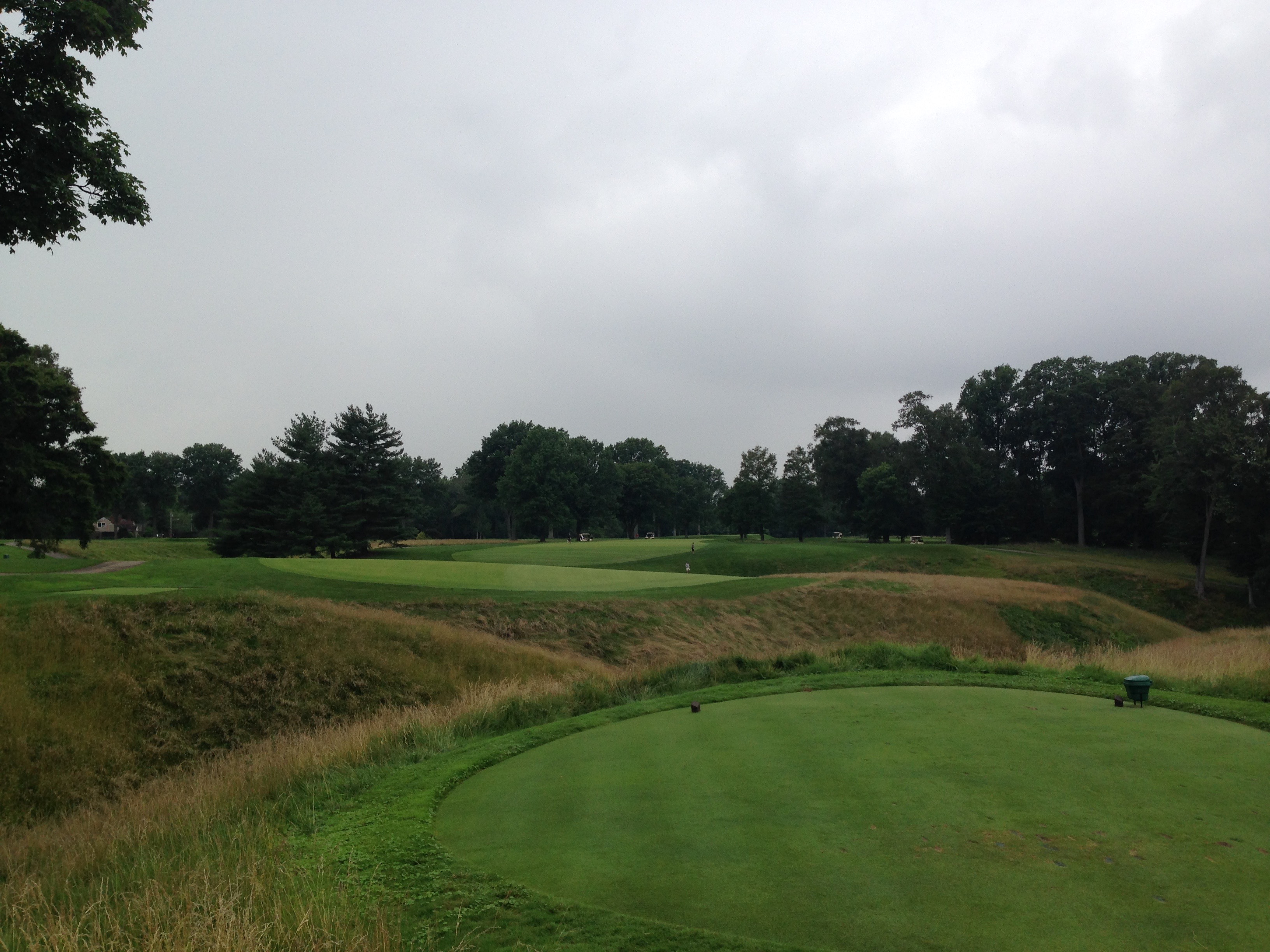 Lake Placid - Links
Lake Placid - Links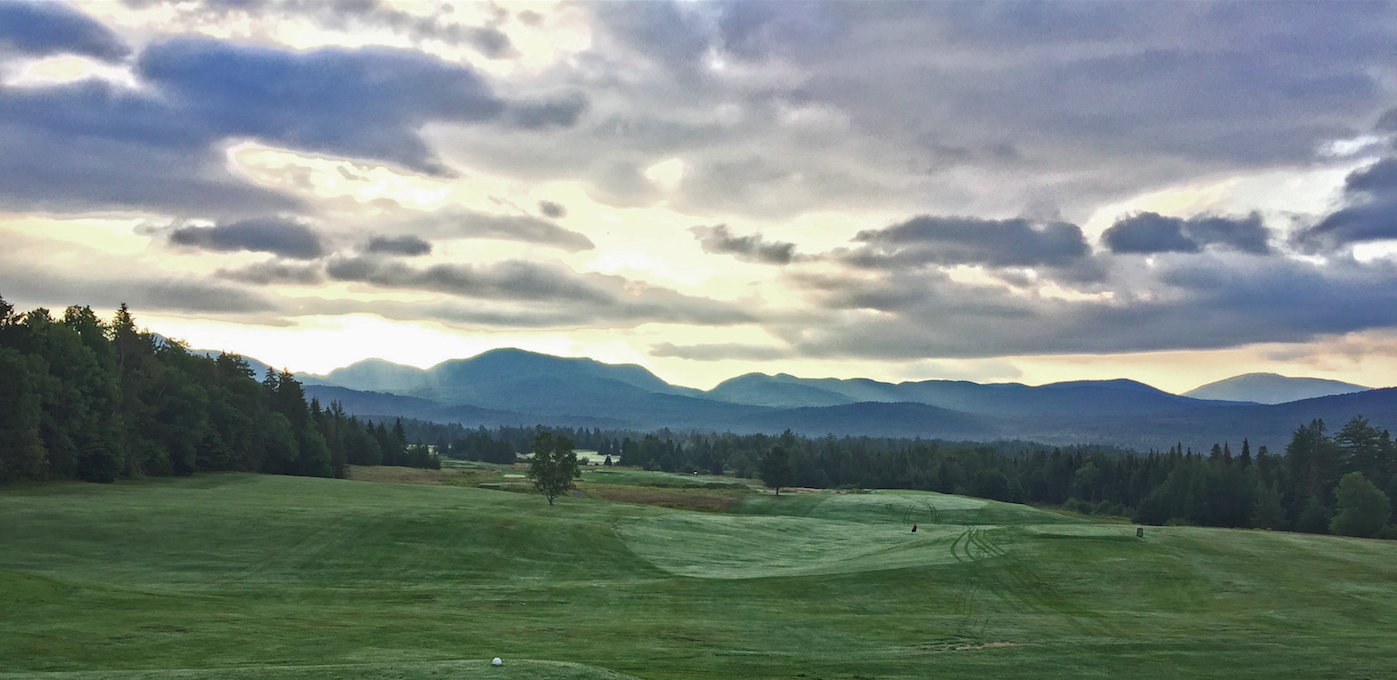 Lederach
Lederach (Photo: The Bausch Collection at MyPhillyGolf.com)
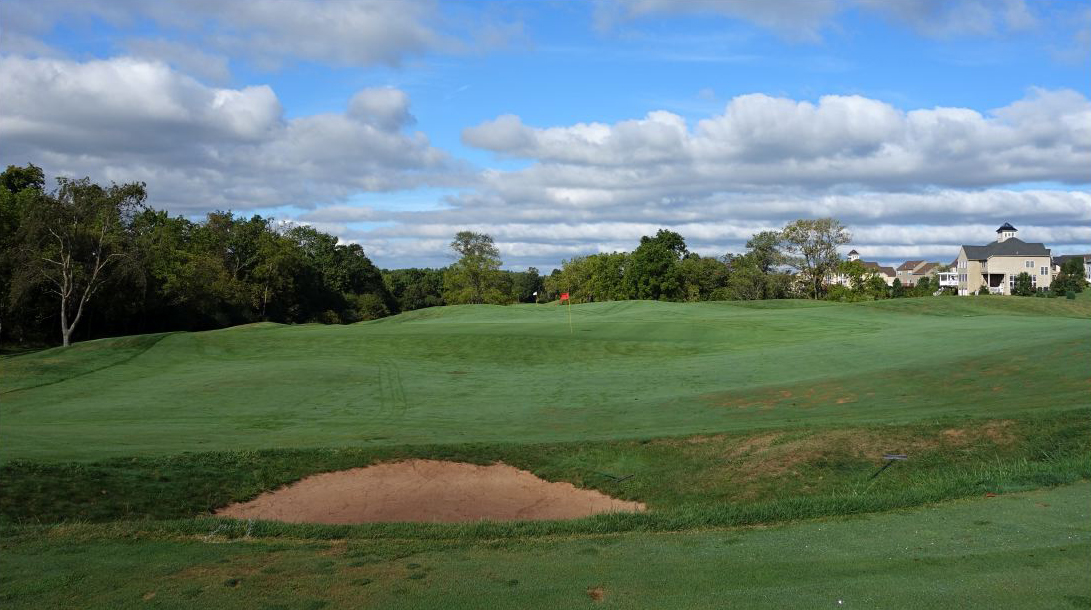 Maketewah
Maketewah (Photo: The Bausch Collection at MyPhillyGolf.com)
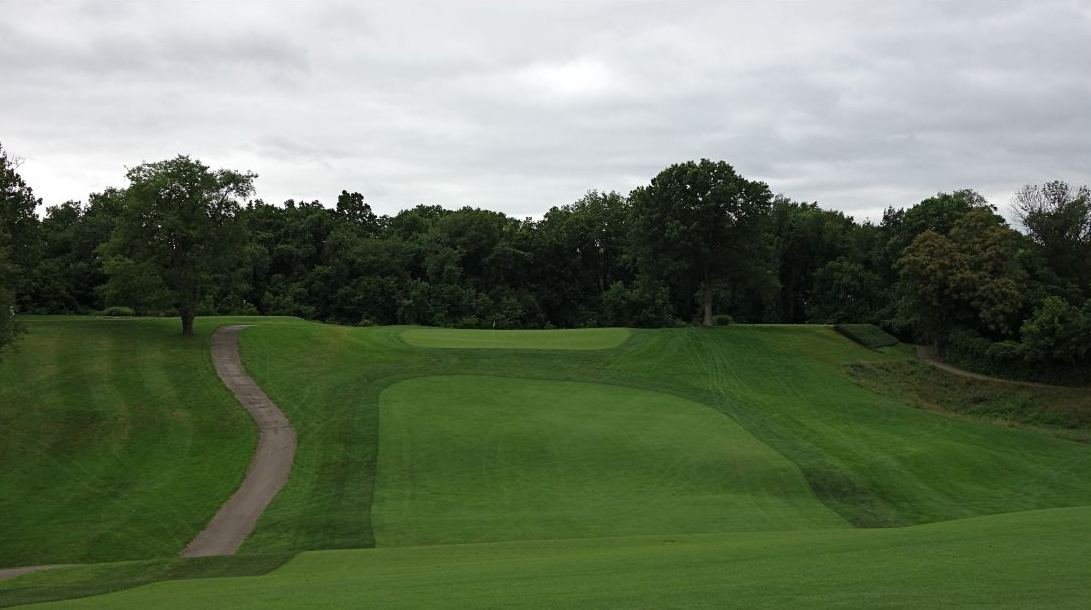 Manufacturers'
Manufacturers' North Hills
North Hills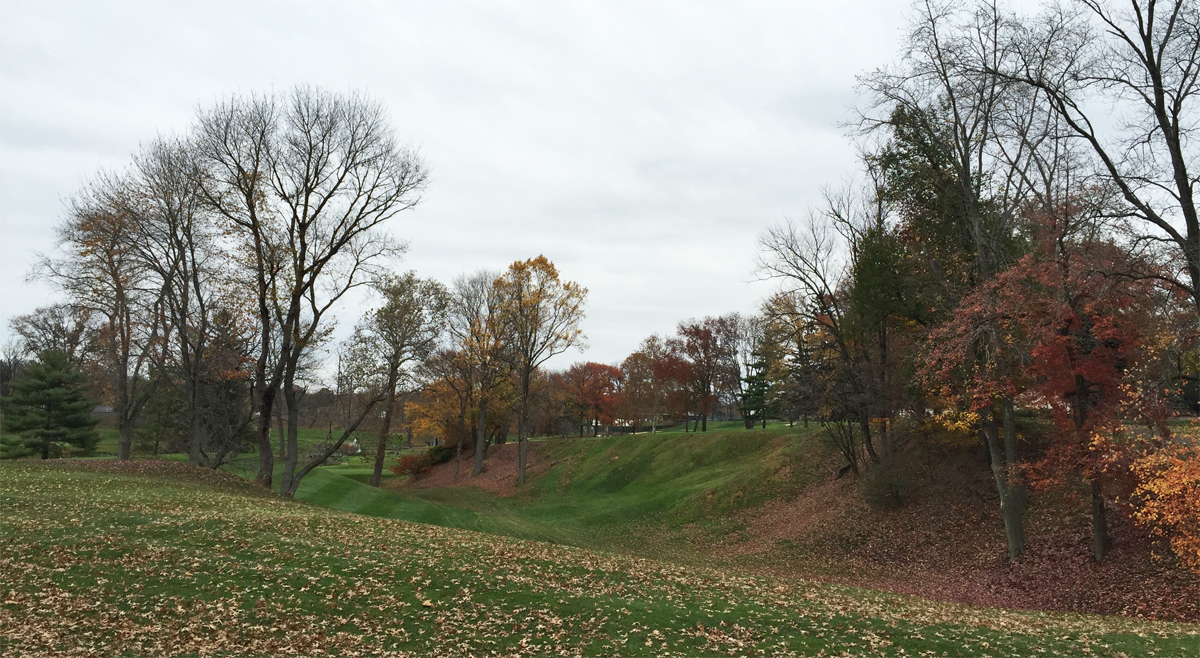 Philmont - North
Philmont - North (Photo: The Bausch Collection at MyPhillyGolf.com)
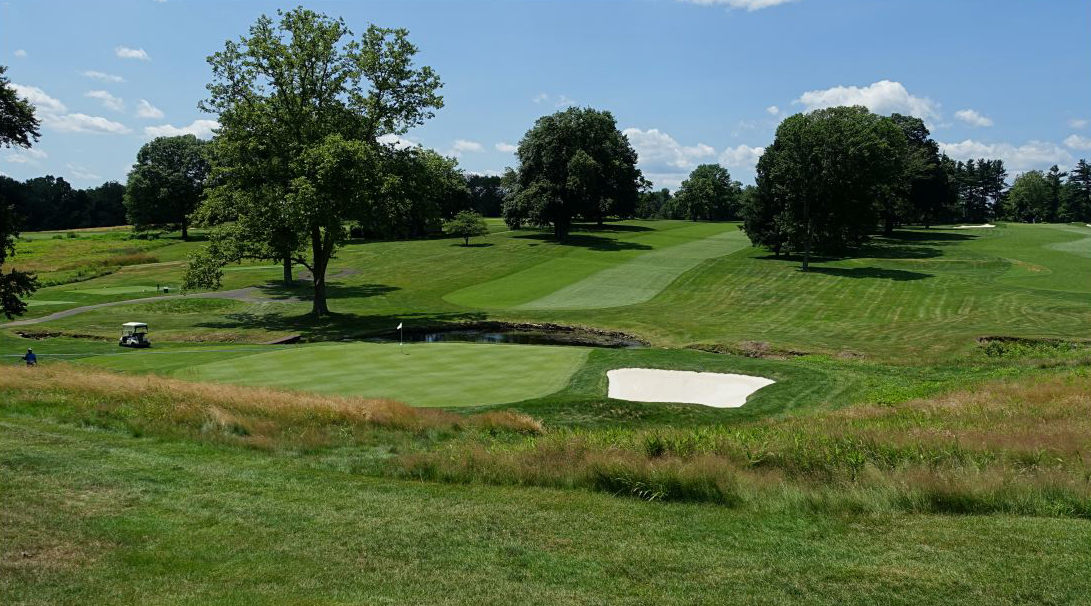 Pittsburgh Field
Pittsburgh Field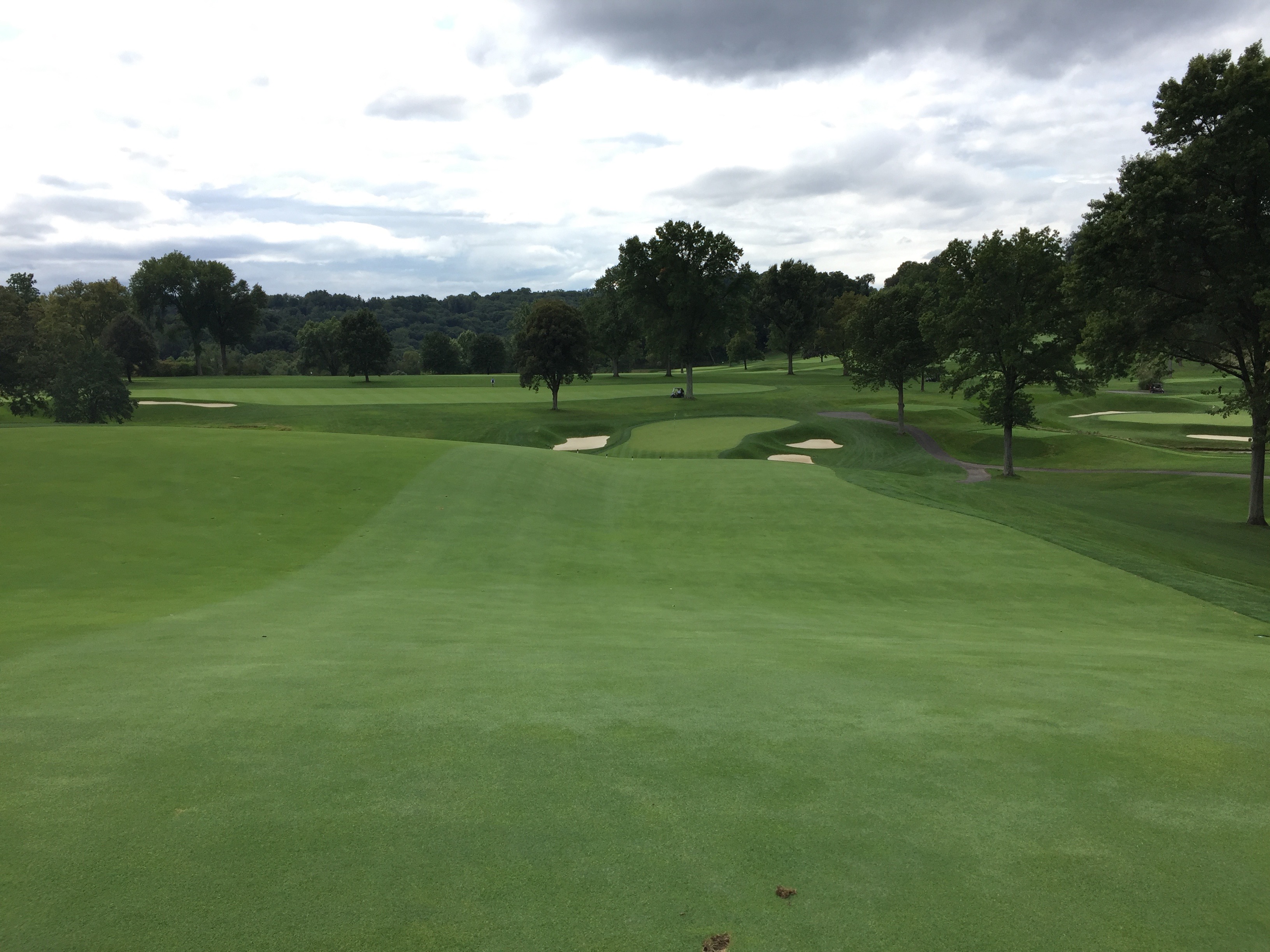 Pocono Manor
Pocono Manor Rolling Green
Rolling Green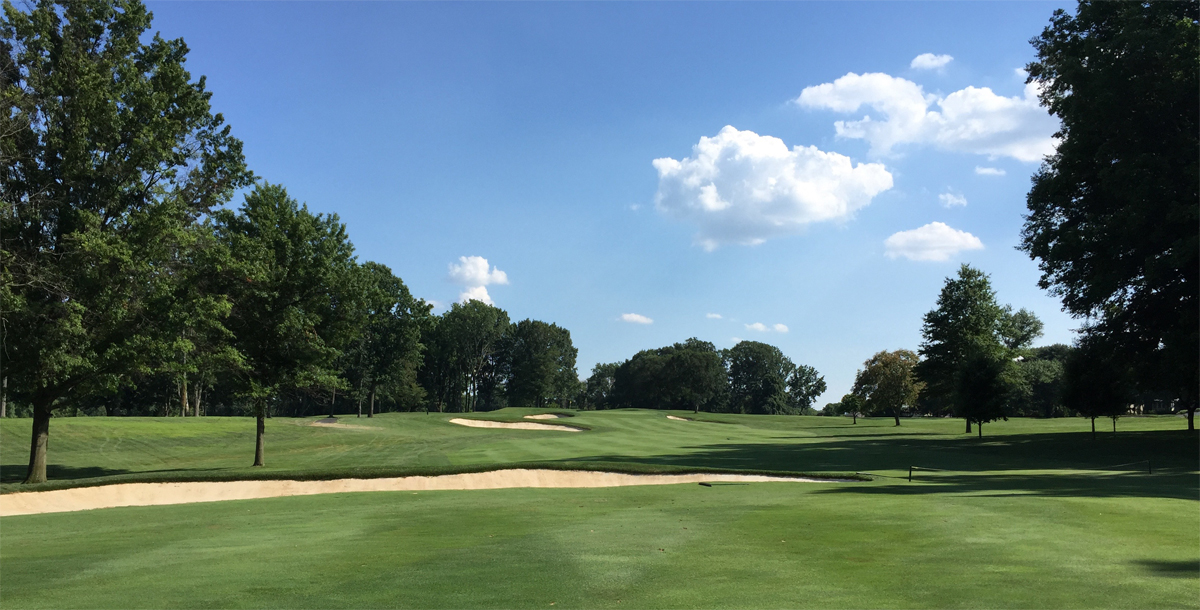 Scranton - Old
Scranton - Old (Photo: The Bausch Collection at MyPhillyGolf.com)
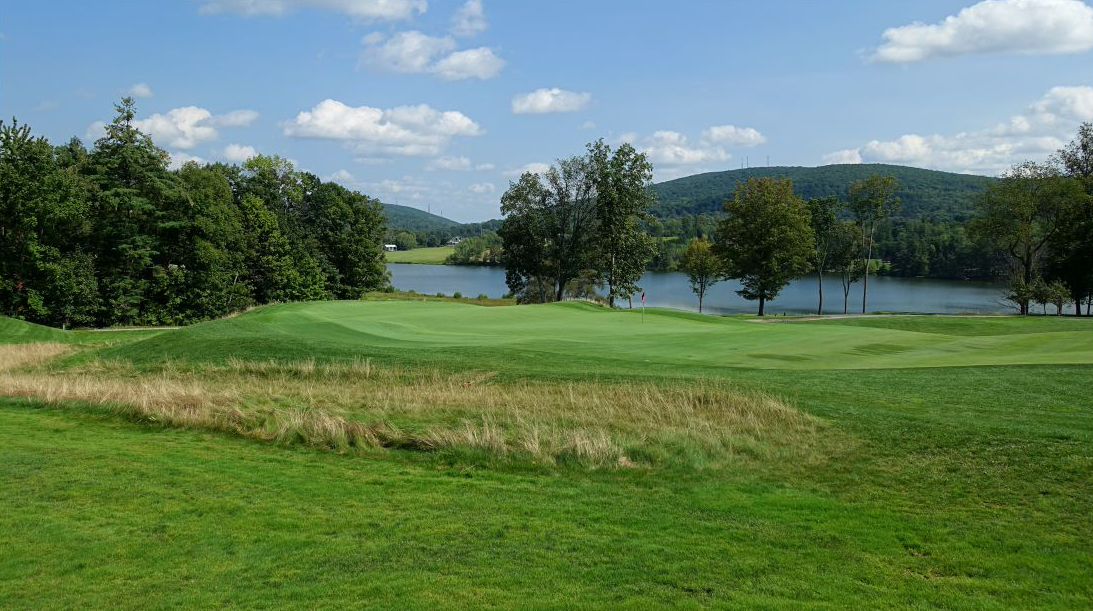 Somerset Hills
Somerset Hills (Photo: The Bausch Collection at MyPhillyGolf.com)
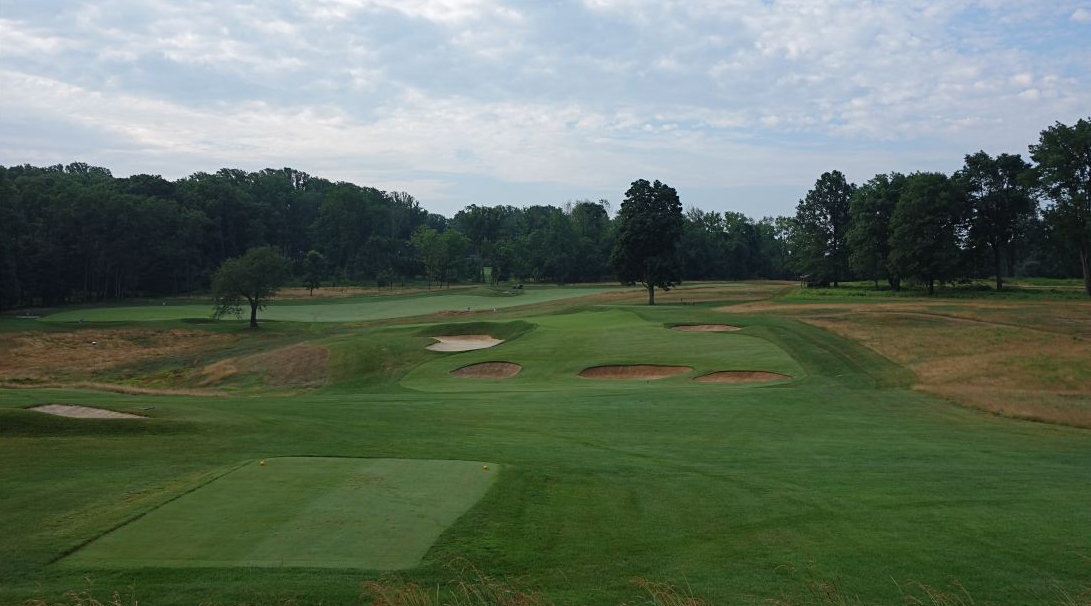 St. George's
St. George's 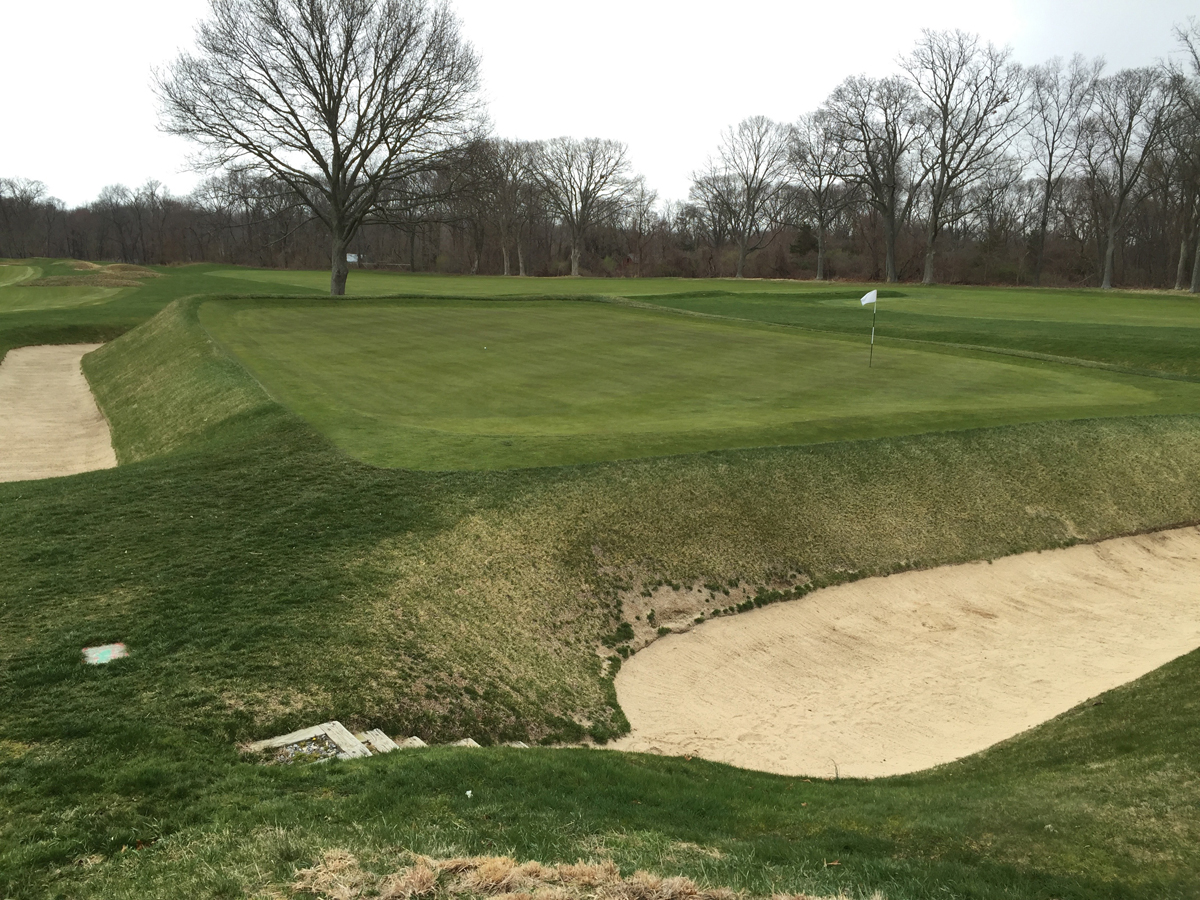 Stonewall - North
Stonewall - North Sunnehanna
Sunnehanna (Photo: The Bausch Collection at MyPhillyGolf.com)
